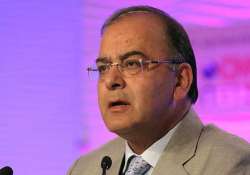Jaitley raises exemption limit, introduces KVP to boost savings
New Delhi: Encouraging household savings, the government today raised tax exemption limit on investments in financial instruments to Rs 1.5 lakh, re-introduced Kisan Vikas Patra and hiked the PPF investment ceiling.In his maiden Budget 2014-15,

New Delhi: Encouraging household savings, the government today raised tax exemption limit on investments in financial instruments to Rs 1.5 lakh, re-introduced Kisan Vikas Patra and hiked the PPF investment ceiling.
In his maiden Budget 2014-15, Finance Minister Arun Jaitley also proposed higher exemption limit for re-payment of interest on loans of self-occupied houses from Rs 1.5 lakh to Rs 2 lakh.
These instruments, along with rise in I-T exemption limits by Rs 50,000 crore to Rs 2.5 lakh can yield a maximum saving of Rs 39,655, according to expert estimates.
“To address the concerns of decline in savings rate and improving returns for small savers, I propose to revitalise small savings,” Jaitley said.
As regards the Public Provident Fund, an individual can invest up to Rs 1.5 lakh, as against Rs 1 lakh presently. PPF is a 15-year investment scheme, which attracts tax exemption.
Currently, investments and expenditures up to a combined limit of Rs 1 lakh get exemptions under Sections 80C, 80CC and 80CCC of the I-T Act. Now, it has been hiked to Rs 1.5 lakh.
There have been demands from bankers and insurers to hike the tax exemption limit from Rs 1 lakh per annum to encourage household savings.
With regard to Kisan Vikas Patra (KVP), Jaitley said it was a very popular instrument among small savers. “I plan to reintroduce the instrument to encourage people, who may have banked and unbanked savings to invest in this instrument.”
The KVP was discontinued by the UPA government in 2011 following the Shyamala Gopinath Committee report. It had suggested that KVPs may be discontinued as they are prone to misuse being a bearer-like instruments.
He also proposed to launch National Savings Certificate (NSC) with insurance cover to provide additional benefits for the small saver.
In his maiden Budget 2014-15, Finance Minister Arun Jaitley also proposed higher exemption limit for re-payment of interest on loans of self-occupied houses from Rs 1.5 lakh to Rs 2 lakh.
These instruments, along with rise in I-T exemption limits by Rs 50,000 crore to Rs 2.5 lakh can yield a maximum saving of Rs 39,655, according to expert estimates.
“To address the concerns of decline in savings rate and improving returns for small savers, I propose to revitalise small savings,” Jaitley said.
As regards the Public Provident Fund, an individual can invest up to Rs 1.5 lakh, as against Rs 1 lakh presently. PPF is a 15-year investment scheme, which attracts tax exemption.
Currently, investments and expenditures up to a combined limit of Rs 1 lakh get exemptions under Sections 80C, 80CC and 80CCC of the I-T Act. Now, it has been hiked to Rs 1.5 lakh.
There have been demands from bankers and insurers to hike the tax exemption limit from Rs 1 lakh per annum to encourage household savings.
With regard to Kisan Vikas Patra (KVP), Jaitley said it was a very popular instrument among small savers. “I plan to reintroduce the instrument to encourage people, who may have banked and unbanked savings to invest in this instrument.”
The KVP was discontinued by the UPA government in 2011 following the Shyamala Gopinath Committee report. It had suggested that KVPs may be discontinued as they are prone to misuse being a bearer-like instruments.
He also proposed to launch National Savings Certificate (NSC) with insurance cover to provide additional benefits for the small saver.